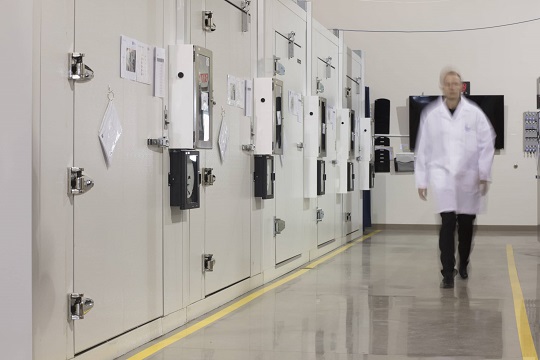

When inquiring about accelerated aging testing, many of our new clients ask why they should pay for real-time aging if their samples will simply be sitting on a shelf for the real-time aging duration. Their logic is if they are going to be sitting on a shelf at our lab, why can’t they sit on a shelf at their facility?
With this, we respond with a question and pose a situation that happens far too often.
Do you have a designated location that is quality controlled where these samples will live?
If the answer to this is no, our recommendation is to let us store the real-time aging samples for you.
Let us say we are talking about a 5-year real-time aging study. Because there is not a designated location for real-time aging samples in your facility, the samples will be stored under the desk of the engineer who oversees that project.
Imagine that engineer gets a job somewhere else, and when they left after their 2-week notice, they did not update the team about the box of real-time aging samples under their desk. Once they are no longer working for you and the office manager is cleaning away the remaining things from the desk, they see the box under the desk. Since they are not sure what they are for and because the box is not labeled, the box is put in storage.
Another year or two goes by and there is a major cleaning overhaul. No one knows what this box is for, so it gets pushed even more into the abyss.
After 5 years you’ll need to submit your real time aging results to the FDA. The FDA sends you a letter requesting your 5-year real-time aging data. Since you do not have these samples because they are lost somewhere in your facility or were potentially thrown away, you are not able to back up your accelerated aging claim. Real-time aging data is required by the FDA and therefore a situation like this should be avoided.
All this mess could be avoided if you let a lab manage your real-time aging samples for you.
While the instance above is a hypothetical situation, it has happened before, and it will happen again.
We like to compare real-time aging storage to paying for home insurance. Yes, paying for home insurance is frustrating because it seems like we are never going to use it. Then there is the one time a tree fell on your house and you were thankful for insurance because you were covered. Having a lab manage your real-time aging storage is a lot like that. There is a likelihood that the samples would be fine at your facility, but in the event of turnover or there not being a designated area for samples, they could get lost in the shuffle and that would end up costing a lot more than paying for real-time aging storage.
Is it a risk you are willing to take? That is what it ultimately boils down to. When you are dedicating years to product development and then packaging, the last thing you want is to have the project jeopardized by neglecting to opt for real-time aging storage if it could be easily avoided.
PCL Real-Time Aging Storage Shelving Update
With our recent expansion, we added new shelving storage for real-time aging. With this update, there will be designated shelving for 1 year, 3 year, and 5-year aging studies. Our real-time aging storage environment is human ambient temperature, monitored daily during the business week, and is protected with an opaque plastic shroud to ensure that your samples are protected from dust, light, and moisture.
Once your real-time aging study has complete, we will test the samples for you, author the report, and send back your real-time aging samples!